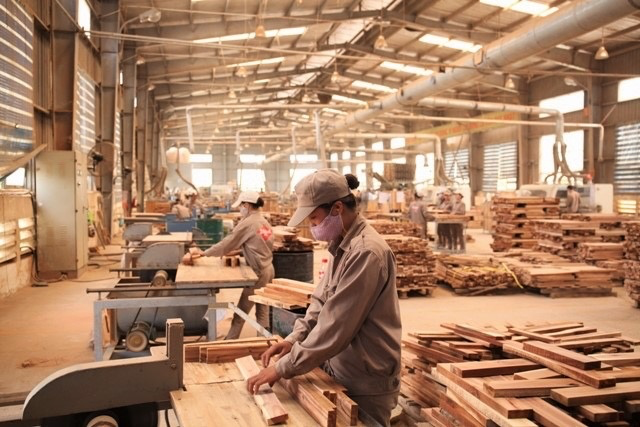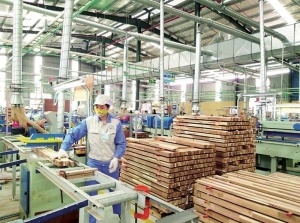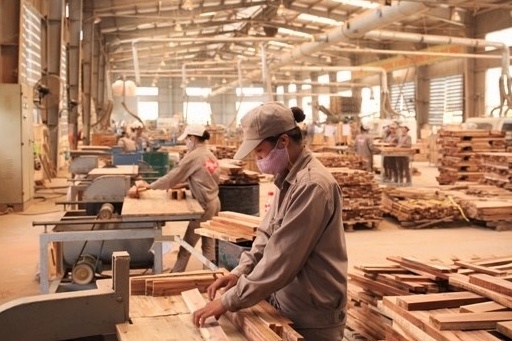Vietnamese furniture is re-entering the international marketplace
 |
Nguyen Quoc Khanh, chairman of the Handicraft and Wood Industry Association of Ho Chi Minh City (HAWA), stated on July 28 that businesses need to re-evaluate their product lines to bring growth back to Vietnam's wooden furniture export market.
In the last two months, the purchase of new, updated, and repaired homes has increased in the major import markets such as the United States and the EU, indicating an increase in demand for interior and exterior wooden products.
However, over the first six months of 2023, orders at timber processing companies fell by an average of 30 per cent, according to HAWA data.
Thien Minh Trade Co., Ltd.'s export sales have slowed, according to the company's vice president Tran Lam Son.
However, he stated, "We have already received orders from the German and Dutch markets. Also, in the US, our associates have depleted their stocks as consumers are resuming their shopping habits."
According to Son, consumers have changed their mind regarding purchases and the order quantity has decreased. The delivery time has also dropped to 45–60 days, rather than the 70–90 days seen previously. European buyers are placing a greater emphasis on product origin, and Americans prefer products from plantations priced between $300 and $750.
If it seeks out opportunities in new markets, Vietnam's timber processing industry can still return to the global market.
Tran Nhu Trang, a representative of the Swiss Import Promotion Programme (SIPPO), encourages businesses to seek out more opportunities in markets such as Australia, Canada, Japan, South Korea, and India, with a particular emphasis on the Middle East.
According to the Vietnam Trade Office in the United Arab Emirates, the annual growth rate of furniture demand in Gulf Cooperation Council countries exceeds 45 per cent. Consumers are interested in Vietnamese furniture; in the first four months of the year, Vietnam's exports of timber and furniture to the UAE surpassed $11 million, up 38 per cent from the same period in 2022.
"The industry must restructure its product segment to match the needs of each market," said Trang.
According to SIPPO data, market demand is shifting towards products made with novel wood materials, engineered wood (3D-printed wood), and timber that is entirely traceable.
Over the last three years, the industry has encountered difficulties as factories have had to reduce capacity and labour, with many businesses becoming insolvent and being forced to pay back their debts.
According to the General Statistics Office, the export value of timber and wooden products in the first half of 2023 is estimated at $6 billion, a decline of 28.8 per cent from the same period in 2022.
 | Wood industry striving to regain growth momentum Having undergone numerous hardships, businesses in the wood industry are showing great resilience with a high level of adaption and flexibility to regain their growth momentum. |
 | Furniture export orders return but requirements higher While the demand for export markets remains low, the timber industry must increase its competitiveness to remain viable. |
What the stars mean:
★ Poor ★ ★ Promising ★★★ Good ★★★★ Very good ★★★★★ Exceptional
 Tag:
Tag:
Related Contents
Latest News
More News
- Acecook Vietnam: 30 years of creating happiness (January 08, 2026 | 08:00)
- Sustainability a core value for DKSH’s vision (January 07, 2026 | 16:00)
- People encouraged to contribute and grow at AstraZeneca Vietnam (January 07, 2026 | 15:48)
- Dat Bike accelerates sustainable mobility (January 07, 2026 | 15:24)
- Innovation to support modern healthcare development (January 07, 2026 | 10:00)
- Six localities record double-digit growth as regional performance diverges in 2025 (January 06, 2026 | 18:00)
- E-commerce market undergoes transformation amid rising competition and regulation (January 06, 2026 | 17:54)
- Vietnam’s industrial output hits seven-year high in 2025 (January 06, 2026 | 17:47)
- GELEX’s credit rating outlook upgraded to 'Positive' by VIS Rating (January 06, 2026 | 16:49)
- Finance sector lays firm groundwork for 2026 after major reform (January 06, 2026 | 15:30)





















 Mobile Version
Mobile Version